The restoration of a 1980's Williams Defender arcade machine
Building a Vector Monitor from a Raster TV
Building a Vector Monitor from a Raster TV
This is a summary of the HackADay.IO log from Fred Kono on how to convert standard Raster TV sets into Vertical arcade monitors.
Over time Fred’s comments and images got lost and broken so I have summarised his great work here and will be continuing it when one of his new Defelection boards arrives in the UK in the next few weeks 🙂
Rewind the vertical yoke
Q: How did you adapt the raster yoke (with different impedances on H and V) to a vector signal?
A: Rewound the Vertical coil.
Q: Why does the vertical yolk need to be rewound?
A: Not enough current can build up to move the beam with the original windings. In other words the yoke used in a TV has too many windings on the vertical side because it is wound to run at a slow frequency.
Q: .. and how did you calculate how many turns to use?
A: Use the Amplifone yoke specs and then try to get yours close with a LCR Meter. I just did 92 turns and it came out pretty close […] I used 92 turns per side as a starting point. The vectrex uses 120 turns and the atari wg6100 uses 93 or so turns. I started with 92 to see how it works.
Q: What type of wire should I use?
A: I used 24 gauge wire.
Q: How do you actually do this?
A:
Yoke Removed. I used the heat gun to loosen up the glue on it.
Yoke disassembly.
#24 wire ready for its new home.
92 Turns each side.
The yoke put back together. I used hot glue to hold the parts like the old glue did.
2. How do I power the HV?
Q: How do I power the HV?
A: I have not built a separate high voltage circuit yet. I left the TV’s yoke connected, but way off to the side so that the high voltage would come up. My yoke was placed on the tube and controlled by my deflection board.
Q: Can I build my own HV (High Voltage) circuit?
A: Yes, you can use a schematic similar to the one put together by Fred Kono below
HV Schematic
HV Board
Q: How do I build by own HV board?
A: Okay I have settled on a elegant and cheap solution to making the High Voltage.
If you want to follow a long you will need to buy one each of these items.
2SD2599 or equivalent Hot transistor. Most of the newer hot transistors will work. (I used one out of a 13″ TV)
One of these SMPS (Switching Mode Power Supplies).
DC DC Converter Boost 10-32V to 60-90V 100W Step Up Voltage Power Supply MAX 2A
http://www.ebay.com/itm/251389244815?_trksid=p2059210.m2749.l2649&ssPageName=STRK%3AMEBIDX%3AIT
This flyback is the one I settled on because it is cheap and available.
154-146A Flyback Transformer 154146A / HR 8500
http://www.ebay.com.hk/itm/154-146A-Flyback-Transformer-154146A-HR-8500-/400926855878?hash=item5d591a52c6
555 timer, A few fast switching diodes (UF4007), 2n2222, some resistors, capacitors and misc. Most stuff any good parts bin will have.
Some of you might ask why did you not use a WG6100 or Amplifone flyback. The answer is simply because it was cheaper to use the above components. The WG and Amplifone flybacks are $40 or so each (I even asked about price breaks). All the parts to build the version I made should be less than that to build with all new parts. I was thinking about designing a pcb with a SMPS for B+ when I found that the Chinese already built one for less than $10.
4. How do I build my own Deflection board
Q: What’s the quickest way of testing?
A: Use an Ampliphone Deflection board as used in most of Atari’s Vector games
Q: Wow! Those are crazy expensive to buy these days on eBay?
A: Yes, that’s why Fred designed his own (*and he sells them too)
Q: What design did Fred use?
A: This is the schematic for my deflection PCB with the TIP transistors.
The circuit outlined in the green box is what is on my pcb. For the small signal transistors I used 2n2222 and 2n3906 transistors.
My deflection pcb is all assembled. I am waiting for two 24V dc power supplies I ordered to come in. They should be here any day. I will use them to power the deflection pcb.
5. Does all this really work?
Q: Does all this really work?
A: Yep! Here’s some images from Fred Kono’s work on getting Asteroids to run on a standard Raster TV with Yolk rewound
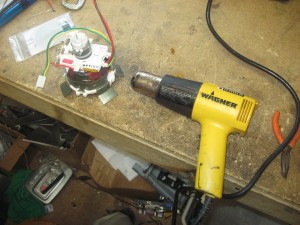
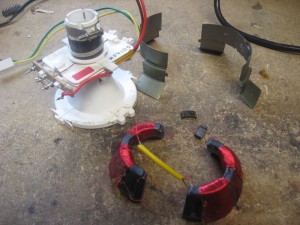
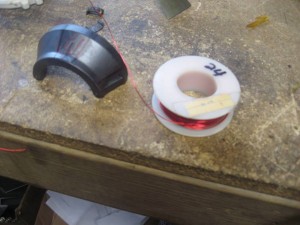
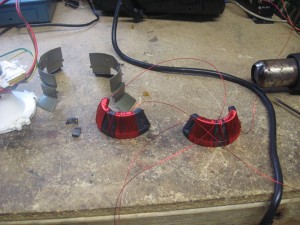
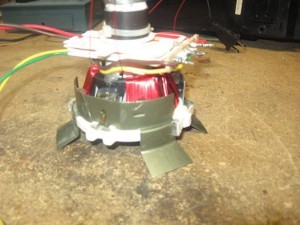
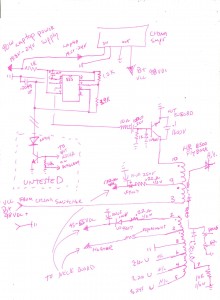
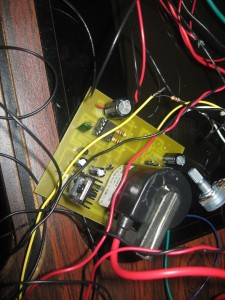
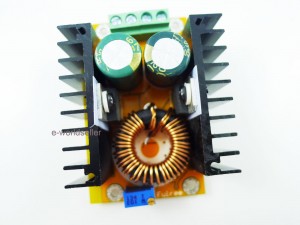
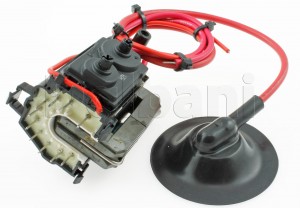
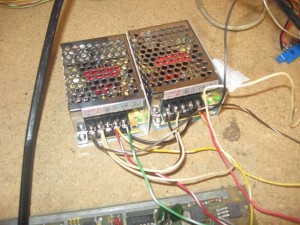
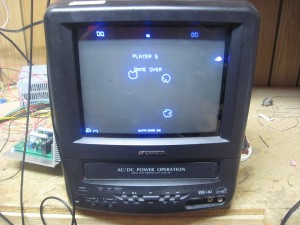
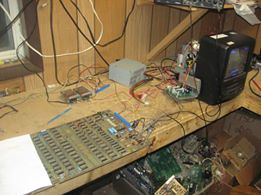
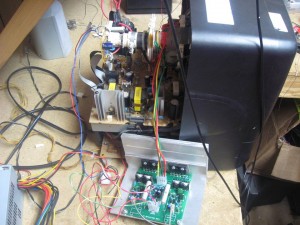
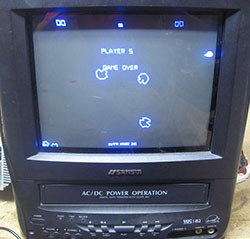
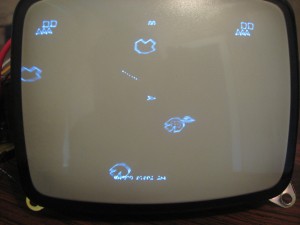
Recent Comments